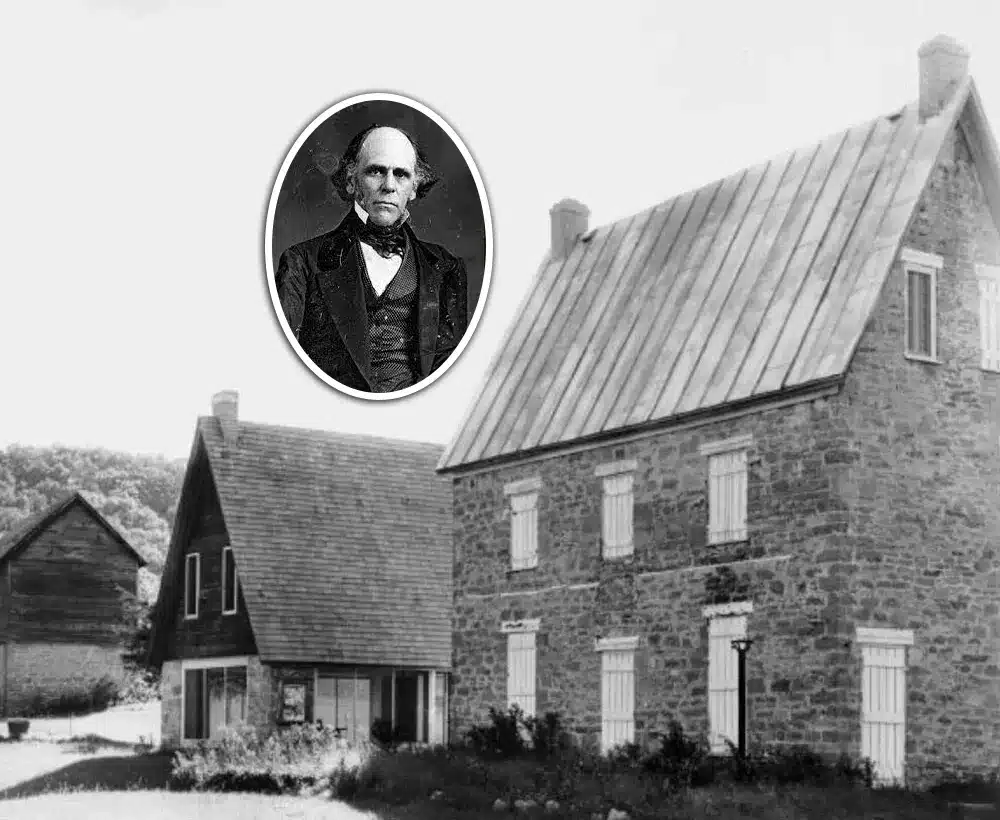Our Story

We glimpsed this enchanting house between the trees each time we headed to Bruce’s art professor’s place next door, beginning in the early 1990s. About thirty years later, we were in the right place at the right time, and purchased the house April 1, 2021. It was Samantha’s dream to stabilize, restore, and rejuvenate this super tall, skinny house. She had 30 years of experience managing historic properties in Madison, and her rolodex was bursting with enthusiastic advisors and craftspeople. The former owners of the house blessed our vision and offered unrestrained encouragement every step of the way. After only four months of intense work, we were ready to open up the main house. The summer kitchen took a solid two months more and now we can comfortably host up 10 guests. We were featured in Madison Magazine’s July 2022 issue, won the 2022 Preservation Award from the Madison Trust for Historic Preservation, and won the 2023 Board of Curators Restoration Award from the State Historical Society.
Want the down and dirty details? Restoration efforts included: repointing mortar joints (four feet down and two feet up) and chimneys; buttoning up the tin roof and re-roofing the summer kitchen with cedar shingles; rebuilding the eaves, soffits, and facia; adding gutters and downspouts; relocating a large colony of bats and a flying squirrel family (sorry!); gutting, reinsulating, and rebuilding the third floor and loft; re-plastering all walls; refinishing the fir floors; repainting all other floors, walls, wood trim; refinishing all doors; re-plating historic hinges; re-grading the land around the house; augmenting the heating system and adding central air, as well as installing HVAC on the third floor; installing a new well and septic system; upgrading and adding electrical and plumbing; renovating the bathroom and adding a first floor bathroom; performing fine carpentry in the kitchen and various other rooms, and adding a screen porch. In just one weekend, all of the furniture and art was moved in. It was tough, but a blast!
Major enhancements include a new first floor bathroom and transformation of the summer kitchen into a gorgeous bedroom and loft with windows on three sides and a screen porch on the fourth. We added an unobtrusive gas fireplace insert in the living room for extra warmth and festive winter stays. We received State tax credits for the restoration, which adhered to National Park Standards.

2022 Preservation Award, Madison Trust for Historic Preservation

2023 Restoration Award, Board of Curators, Wisconsin State Historical Society
Brisbane’s Story

William Henry Brisbane built this three-story stone house in Arena in 1868, when he was 62 years old. Dozens of years prior to the Civil War, Brisbane’s family in Beaufort County, South Carolina, had inherited 33 enslaved people. As Brisbane became interested in abolitionism, he came to realize slavery was immoral and wrong.
After being driven out of the south for his views, he and his family eventually landed in Arena. The shape of the house is unusual for Wisconsin; its design recalls Charleston’s climate, with tall windows and doors on all four sides to provide cross ventilation. As some southerners moved northward, they settled in states such as Indiana, Iowa, and Illinois, and the building style they brought with them became known as “I-style.” The house was placed on the National Register of Historic Places in 1990 and on the Wisconsin State Register of Historic Places in 1996 for its architectural significance. The adjacent building, the summer kitchen, was likely built around the same time or slightly after the house, as well as the granary or barn, which has collapsed.
Brisbane was a man of many professions but he was most noted for his campaign for human rights. He detailed his experiences, along with poetry and short fiction, in his multi-volume diaries, held by the Wisconsin State Historical Society. In one diary, he wrote, “To him all colors were the same / And men of ev’ry grade; / He car’d not what might be their name / He no distinction made.”
Brisbane died in 1878 at age 71. His obituary read in part, “He…had devoted his long life to, and spent a large income in the interests of humanity…he was one of the great and good men of the state; great because he was true to principle, and was the earnest champion of equal rights of man, without regard to birth-place or color. Good, because he was benevolent, kind…” There is a monument to him in the Arena cemetery and he is buried in the Mazomanie cemetery.
Brisbane built his stone house on the traditional lands of Native Americans, including the Fox and Sac Indians. The irony that Brisbane was a vocal opponent of oppression, as well as possibly the first white settler on this site, is not lost on us. Yet, ever since its limestone blocks were carved out of the surrounding bluffs, this one-of-a-kind house has been well-loved by many families, notably the Thudiums, Triers, and Learns/Chaffees. We will love it just as well and can’t wait to share it with you.
– Samantha & Bruce Crownover
"We have had the absolute best time! This house has some serious fabulous vibes. We’ve been researching the history and it’s totally fascinating. Thank you again. One of our favorite Airbnbs and we’ve stayed in many!!"
– Barbara, Chicago, IL



